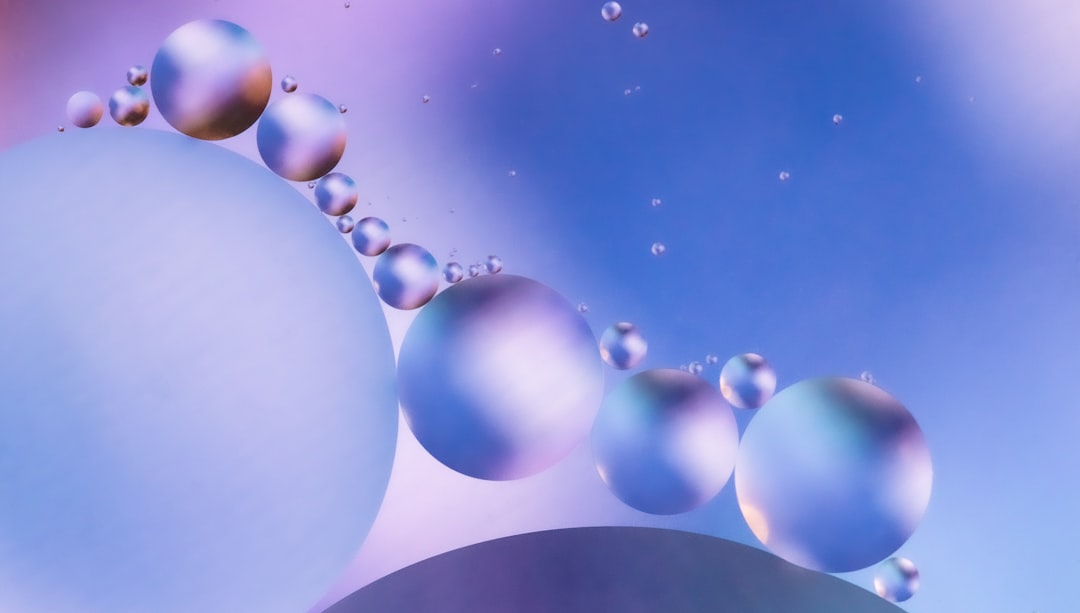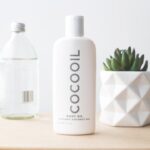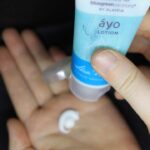Aftercare is a crucial aspect of any beauty or cosmetic procedure, and it’s essential to recognize its significance in achieving optimal results. When you undergo a treatment, whether it’s a facial, laser therapy, or any other skin procedure, your skin needs time to heal and recover. This is where aftercare comes into play.
It’s not just about the immediate aftermath; it’s about setting the stage for long-term skin health and appearance. By adhering to a proper aftercare regimen, you can enhance the benefits of the treatment and minimize potential complications. Moreover, understanding the importance of aftercare can empower you to take control of your skin’s health.
You may find that the steps you take post-treatment can significantly influence your skin’s recovery process. This knowledge can help you make informed decisions about your skincare routine and lifestyle choices, ensuring that you maintain the results of your treatment for as long as possible. Aftercare is not merely a set of instructions; it’s an integral part of your overall skincare journey.
Key Takeaways
- Aftercare is crucial for the success of any skincare treatment
- A proper skincare routine is essential for maintaining healthy skin post-treatment
- Sun exposure should be avoided to prevent damage to the skin
- Managing discomfort and redness is important for a smooth recovery
- Regular exfoliation helps in removing dead skin cells and promoting skin renewal
Proper Skincare Routine
Establishing a proper skincare routine after a treatment is vital for promoting healing and maintaining the results. You should begin by cleansing your skin gently, using a mild, non-irritating cleanser that won’t strip away natural oils. This step is essential to remove any impurities without causing further irritation.
You might want to avoid products with harsh chemicals or exfoliants during this initial phase, as your skin may be sensitive and in need of extra care.
Look for serums or creams that contain calming ingredients like aloe vera or chamomile.
These can help reduce inflammation and promote healing. Remember, consistency is key; sticking to your routine will help your skin recover more effectively and ensure that you enjoy the full benefits of your treatment.
Avoiding Sun Exposure

One of the most critical aspects of aftercare is protecting your skin from sun exposure. After a treatment, your skin may be more susceptible to damage from UV rays, which can lead to complications such as hyperpigmentation or prolonged redness. It’s essential to avoid direct sunlight for at least a few days following your procedure.
If you must go outside, wearing a wide-brimmed hat and seeking shade can provide additional protection.
You should choose a sunscreen that is suitable for your skin type and reapply it every two hours if you’re outdoors.
This proactive approach will not only safeguard your skin during the healing process but also contribute to its long-term health. By prioritizing sun protection, you’re taking an essential step in preserving the results of your treatment.
Managing Discomfort and Redness
| Discomfort and Redness Management Metrics | 2019 | 2020 | 2021 |
|---|---|---|---|
| Number of reported discomfort cases | 150 | 130 | 110 |
| Percentage of patients with reduced redness | 75% | 80% | 85% |
| Average time to discomfort relief (in minutes) | 20 | 18 | 15 |
Experiencing some discomfort or redness after a cosmetic procedure is common, but managing these symptoms effectively can make a significant difference in your recovery experience. You might find that applying a cool compress to the affected areas can provide immediate relief from any heat or swelling. This simple technique can soothe your skin and help reduce inflammation, making you feel more comfortable as you heal.
Additionally, over-the-counter anti-inflammatory medications can be helpful in managing discomfort. However, it’s crucial to consult with your healthcare provider before taking any medication post-treatment. They can guide you on the appropriate options based on your specific situation.
By taking proactive steps to manage discomfort and redness, you’ll be better equipped to navigate the healing process and enjoy the results of your treatment.
Regular Exfoliation
Once your skin has healed sufficiently, incorporating regular exfoliation into your skincare routine can be beneficial for maintaining its health and appearance. Exfoliation helps remove dead skin cells, promoting cell turnover and revealing fresh, radiant skin underneath. However, it’s essential to approach this step with caution, especially after a treatment when your skin may still be sensitive.
You should start with gentle exfoliation methods, such as using a soft washcloth or a mild chemical exfoliant containing alpha-hydroxy acids (AHAs) or beta-hydroxy acids (BHAs). These options can effectively slough away dead skin without causing irritation. As your skin becomes accustomed to exfoliation, you can gradually increase the frequency or intensity of the products you use.
Regular exfoliation not only enhances the texture of your skin but also helps prevent clogged pores and breakouts.
Moisturizing and Hydrating the Skin
Keeping your skin well-moisturized and hydrated is another critical component of aftercare that cannot be overlooked. After a treatment, your skin may feel dry or tight due to various factors such as healing processes or environmental conditions. Using a high-quality moisturizer tailored to your skin type can help restore moisture levels and create a protective barrier against external aggressors.
In addition to traditional moisturizers, consider incorporating hydrating serums into your routine. Look for ingredients like hyaluronic acid or glycerin, which are known for their ability to attract and retain moisture in the skin. By ensuring that your skin remains hydrated, you’ll not only enhance its overall appearance but also support its healing process.
A well-moisturized complexion is more resilient and better equipped to handle environmental stressors.
Monitoring for Any Adverse Reactions
As you navigate through the aftercare process, it’s essential to remain vigilant and monitor your skin for any adverse reactions. While most individuals experience mild side effects post-treatment, being aware of any unusual changes can help you address potential issues early on. Keep an eye out for signs such as excessive redness, swelling, or any unexpected rashes that may develop.
If you notice anything concerning, don’t hesitate to reach out to your healthcare provider or dermatologist for guidance. They can assess your situation and recommend appropriate actions to take. By staying proactive about monitoring your skin’s response, you’ll be better equipped to ensure a smooth recovery and maintain the results of your treatment.
Following Up with Maintenance Treatments
Finally, following up with maintenance treatments is an essential part of sustaining the results of your initial procedure. Many cosmetic treatments require periodic touch-ups or follow-up sessions to maintain their effectiveness over time. Discussing a maintenance plan with your provider can help you determine the best schedule for follow-up treatments based on your individual needs and goals.
Incorporating maintenance treatments into your skincare routine not only helps preserve the results but also allows you to continue investing in your skin’s health. Whether it’s regular facials, laser sessions, or other procedures, these follow-ups can enhance the longevity of your results and keep your skin looking its best. By committing to ongoing care, you’re making a long-term investment in your appearance and overall confidence.
In conclusion, aftercare is an integral part of any cosmetic treatment journey that should not be overlooked. By understanding its importance and following a comprehensive aftercare regimen—including proper skincare routines, sun protection, managing discomfort, regular exfoliation, hydration, monitoring for adverse reactions, and scheduling maintenance treatments—you can maximize the benefits of your procedure and enjoy beautiful, healthy skin for years to come. Your commitment to aftercare will ultimately reflect in the vibrancy and resilience of your complexion, allowing you to feel confident in your skin every day.
After undergoing laser hair removal treatment, it is crucial to follow proper aftercare instructions to ensure optimal results and minimize any potential side effects. One important aspect of aftercare is protecting your skin from sun exposure, as it can increase the risk of complications. For more information on how to care for your skin post-laser hair removal, check out this helpful article on inlaserhairremoval.com.
FAQs
What is laser hair removal aftercare?
Laser hair removal aftercare refers to the steps and precautions that should be taken after undergoing a laser hair removal treatment to ensure proper healing and optimal results.
Why is laser hair removal aftercare important?
Proper aftercare is important to minimize the risk of complications such as skin irritation, redness, and swelling, and to promote the best possible results from the treatment.
What are some common aftercare instructions for laser hair removal?
Common aftercare instructions for laser hair removal may include avoiding sun exposure, using gentle skincare products, avoiding hot showers and baths, and avoiding activities that may cause excessive sweating.
How long does it take for the skin to heal after laser hair removal?
The skin may take a few days to a couple of weeks to fully heal after laser hair removal, depending on the individual’s skin type and the intensity of the treatment.
Are there any specific products that should be used for laser hair removal aftercare?
It is recommended to use gentle, non-irritating skincare products after laser hair removal, such as fragrance-free moisturizers and mild cleansers. It is important to avoid products containing harsh chemicals or exfoliants.
What should be avoided after laser hair removal?
After laser hair removal, it is advisable to avoid sun exposure, hot showers and baths, excessive sweating, and using harsh skincare products that may irritate the skin.
When can I resume normal activities after laser hair removal?
Most individuals can resume normal activities immediately after laser hair removal, but it is important to follow the specific aftercare instructions provided by the treatment provider.







